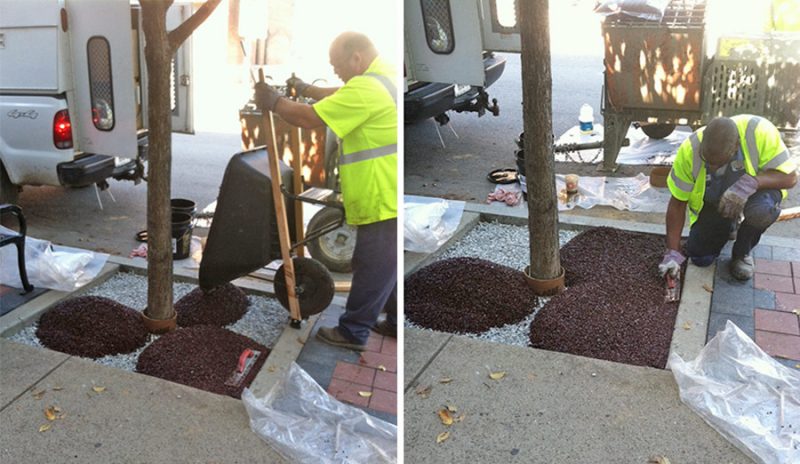In cities like Louisville where much of the urban area is covered in paving, dealing with stormwater runoff can be a major challenge that, unchecked, can lead to dangerous combined sewer overflows that pollute local waterways. One way to mitigate rainwater runoff is with permeable paving that allows water to flow through and be absorbed on site rather than enter the sewer system.
Including permeable paving in design projects, from sidewalks to parking lots, can go a long way toward making an improvement in the overall watershed. And the Louisville Downtown Partnership (LDP) is taking note of these benefits with a permeable paving project in 50 tree wells throughout Downtown.

LDP has partnered with Louisville Metro Public Works to replace the standard tree grates commonly seen in tree wells with a product called Porous Pave that will allow water to reach tree roots while avoiding root compaction from people walking on top. The product has been used in several other cities including Grand Rapids, where 850 tree wells are expected to be covered in porous paving. Louisville previously conducted a pilot study in six tree wells near Sixth and Liberty streets.
Crews have been pouring the new paving for the last week, and work is just about to wrap up. According to an email from Ken Herndon, director of operations a LDP, “There are 47 wells on East Main from Floyd to Second. One foot strips at tree wells on the SW corner of 4th and West Main, six wells on the NW corner of Second and Market, and a large 5’ x 40’ section, yet to be excavated on the northwest corner of 4th and Jefferson.”
Porous Pave is made from a mixture of recycled tires, washed gravel, and rubber resin and can be poured like concrete. According to Herndon, 300 tires are diverted from the landfill for every 1,000 square feet of Porous Pave applied. As a tree grows, crews can cut the material with a jigsaw to accommodate the expanding trunk. Take a look below at how water flows through the material.
http://youtu.be/grACa-_Lesk



Recycled tires?
Hmmm, seems like Ive been reading about recycled tires in other places, Like this:
http://www.wncn.com/story/26750342/rubber-pellets-in-sports-fields-raise-cancer-concerns